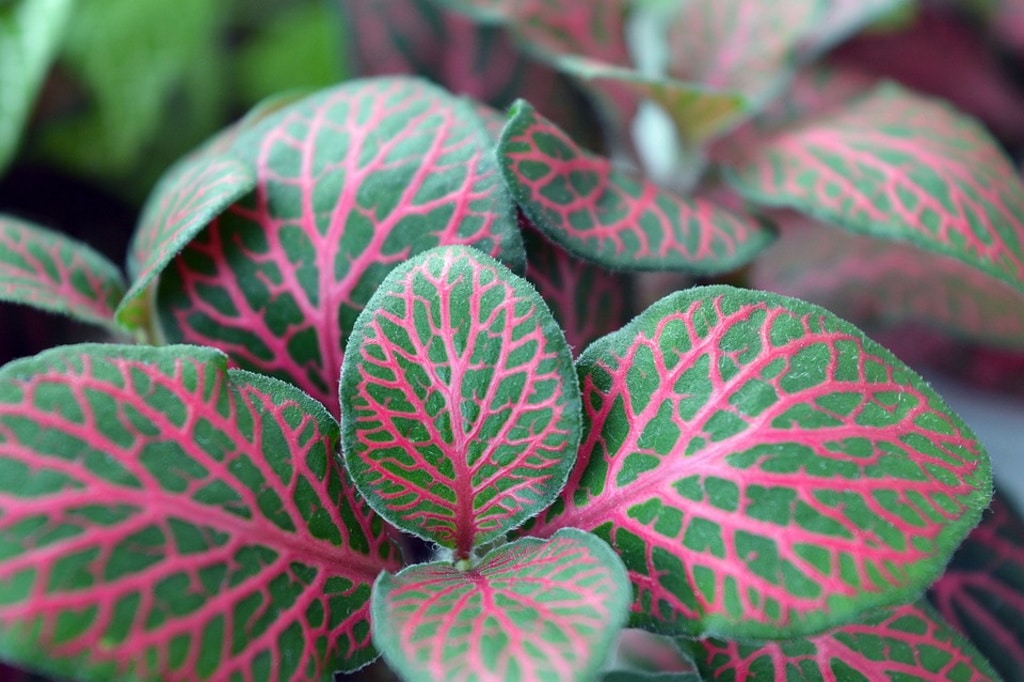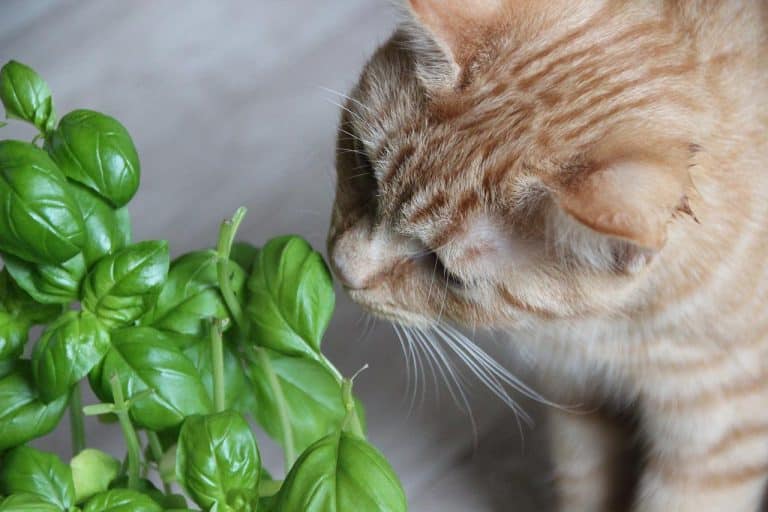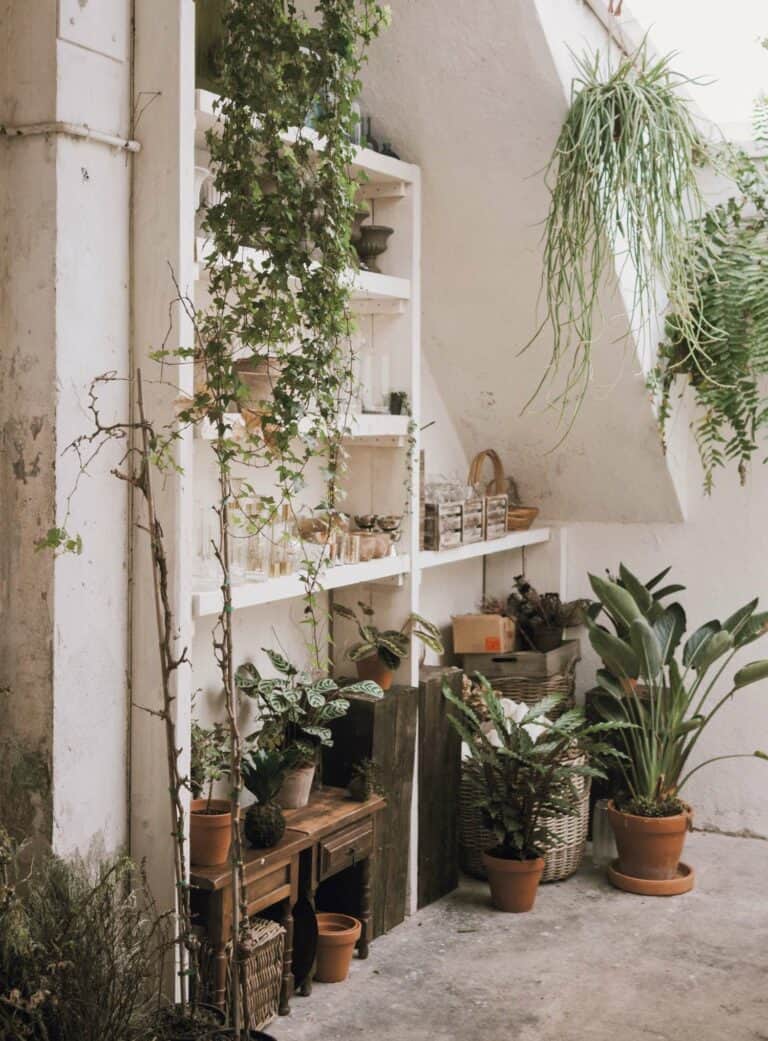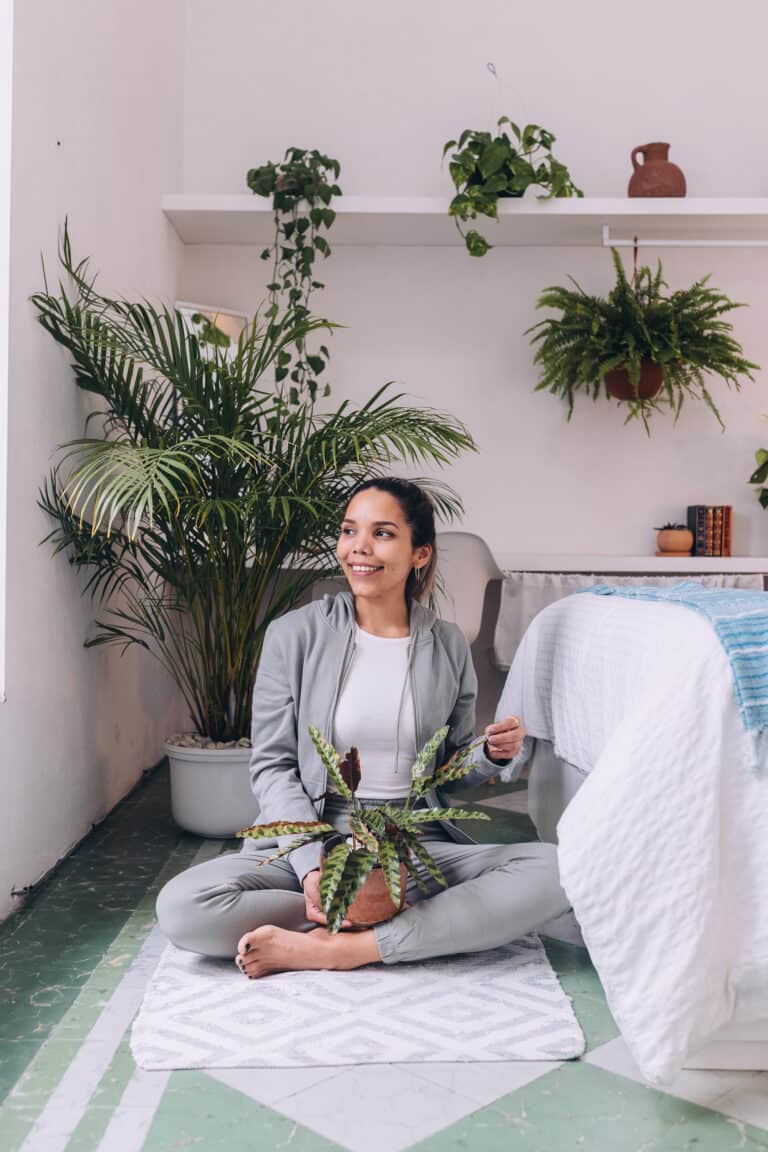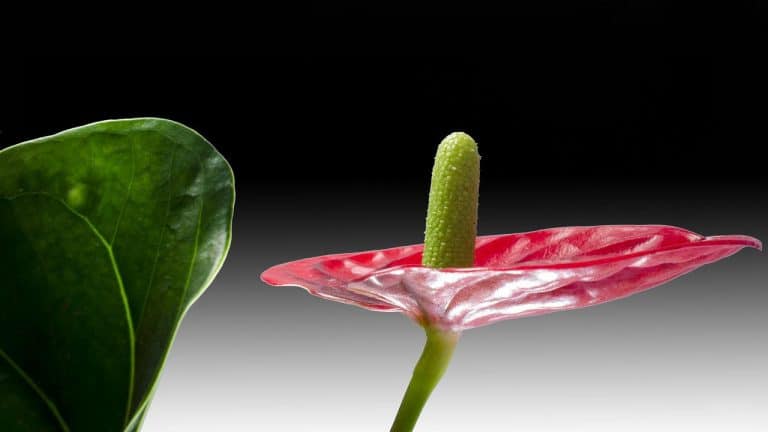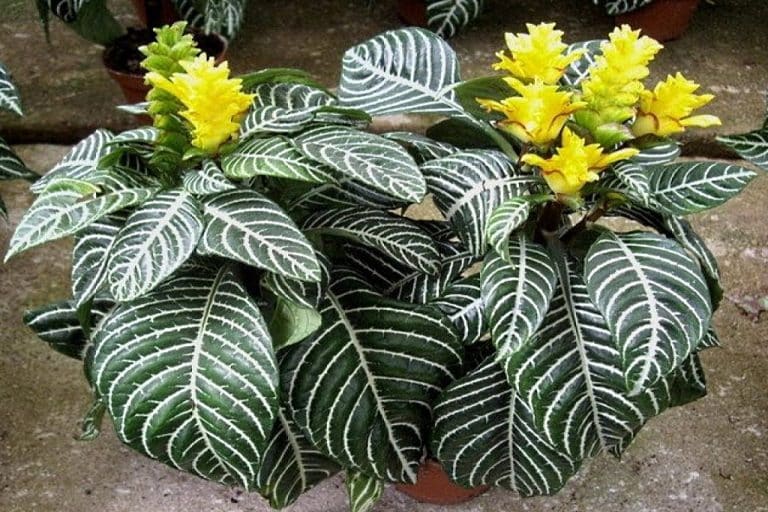Nerve Plant: Fabulous Fittonia Plants
Name: Fittonia, aso known as the Nerve Plant, Mosaic Plant or Net Plant
Categories: Indoor plants, Indoor green plants
Maintenance: Simple
Light conditions of the plant: Medium
Plant size: Small
Description: Fittonia plants are recognizable by their striking leaf veins. Since they prefer higher levels of humidity in the air, they are great mini plants for terrariums, kitchen or bathroom spaces. The plant is in a jar with a diameter of 9 cm, and the height of the plant together with the jar is 10 cm.
Flowering time: July, August, September
Resistance to low temperatures: No
Fragrant: No
Surroundings: The bathroom or kitchen window are great places for it to grow – or a plant terrarium.
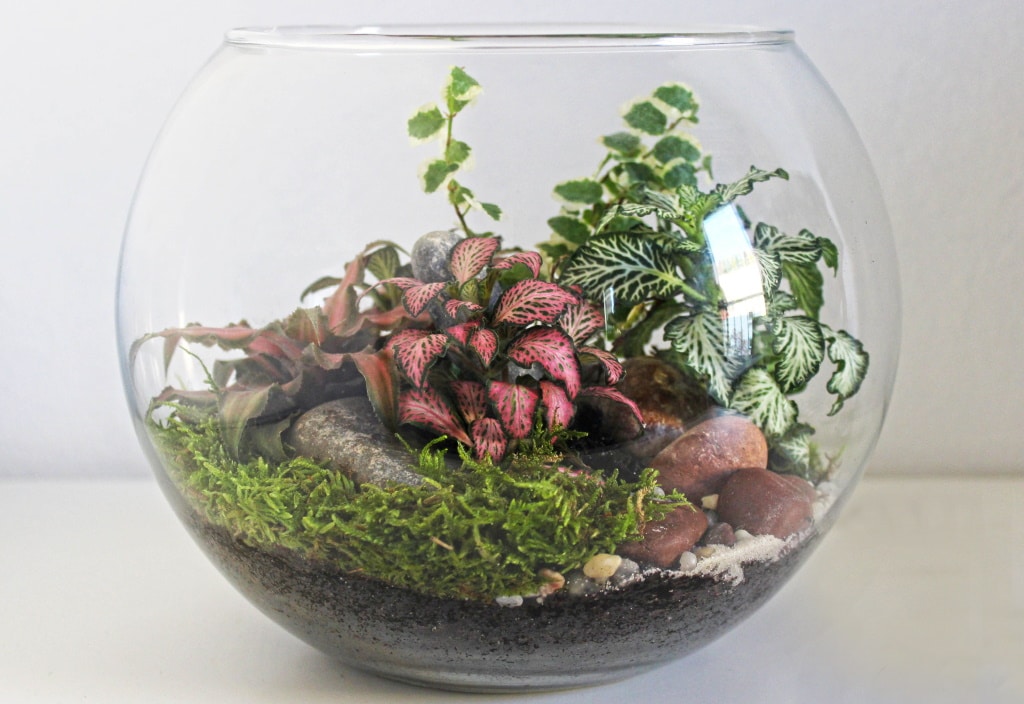
Instructions for planting and caring for plants:
Fittonia is a houseplant that likes indirect light, but it can also thrive in partial shade. Watering is done every 4-5 days depending on the temperature in the room and the amount of light the plant receives and the size of the container in which the plant is located. It is important to keep the soil moderately moist, but remove all excess water from the decorative container. Feed the plant with a universal fertilizer for indoor green plants from the third to the tenth month. We recommend transplanting when you see small roots sticking out at the bottom of the jar.
Fittonia belongs to the Lamiales family. It is also known as the mosaic plant, because of its interesting leaves.
Fittonia and ivy surrounded by moss are the perfect combination for a plant terrarium!
Fittonia is an indoor plant. There are over fifty known species of this plant, and they all originate from two bases:
- the first, Fittonia gigantea, is from Bolivia, it is a 60 cm tall herbaceous perennial, with oval, slightly pointed leaves, bright red veins on a dark green leaf surface;
- the other Fittonia verschaffeltii is from Colombia, it is a low, creeping plant whose leaves are round to heart-shaped or egg-shaped, bluntly rounded at the top, up to 10 cm long, and cover the ground with them.
Fittonia verschaffeltii is represented in two forms: Argyroneura – with silver veins and Pearcei – with bright red veins. The flowers are very small and unsightly, white or pale cream, gathered in a spike-like inflorescence. The inflorescence-spike itself can be up to 10 cm long. Flowers in the period from 6 to 9 months.
Cultivars have recently bred different versions of Fittonia, so that they can now withstand temperatures up to 10 C. The new varieties differ mostly in their leaves, which are no longer just pinnate, but also spread out, embossed, rounded, wavy and much smaller. The new varieties are 8-12 cm tall. The range of colors offered is much larger and more enticing. In addition to the standard: silver, pink, red ribbed leaves, now they are available in white, several shades of burgundy and fuchsia, terracotta, eggplant color, and even almost black. In this way, Fittonia became even more interesting and decorative.
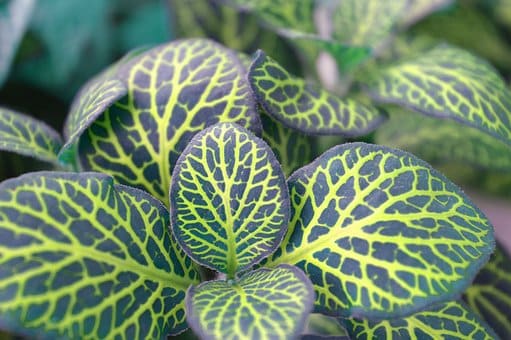
Maintenance and care
They look very nice planted next to tall plants, where they serve as ground covers. The plant requires a shaded position, it should not be exposed to direct sunlight. These are tropical plants, so they require moist and warm soil and air. Their ideal temperature is 21-25 C, and the night or winter temperature must not fall below 16-17 C. Due to these specific conditions, it absorbs well in terrariums. It likes humus soil that is constantly moist but also has good drainage.
Fittonia requires a loose, fertile soil mixture with the addition of 15% river sand. You can also use a universal growing medium mixed with 30-40% perlite to improve drainage and prevent root rot from excess water.
Perlite is inorganic volcanic sand (stone). It is an ecological product with a rough surface and an open structure. Granules contain a lot of air and can absorb a lot of water. By adding perlite, a better and more favorable ratio of air and water is achieved during rooting, sowing and potting of plants.
The root of the plant develops very shallowly, so the plant may decay due to excessive moisture in the upper layers of the soil. It should be watered with soft and lukewarm water, it cannot tolerate hard and cold water. During the summer it should be watered two or three times a week, in the winter less, but the soil must not dry out. Fittonia likes to be sprinkled daily, also with lukewarm water. Top dressing should be applied every 14-15 days during spring and summer, with liquid fertilizers for flowering plants, but twice diluted than according to the instructions on the package.
Remember – if the soil in the container dries out just once, the leaves of Fittonia immediately wither and dry. In order to have enough moisture under the flower pot, you can place a mat with wet pebbles.
If the plant is planted independently for a more beautiful and lush appearance, they should be planted in groups of three plants each. It is even more decorative if the plants are of different colors.
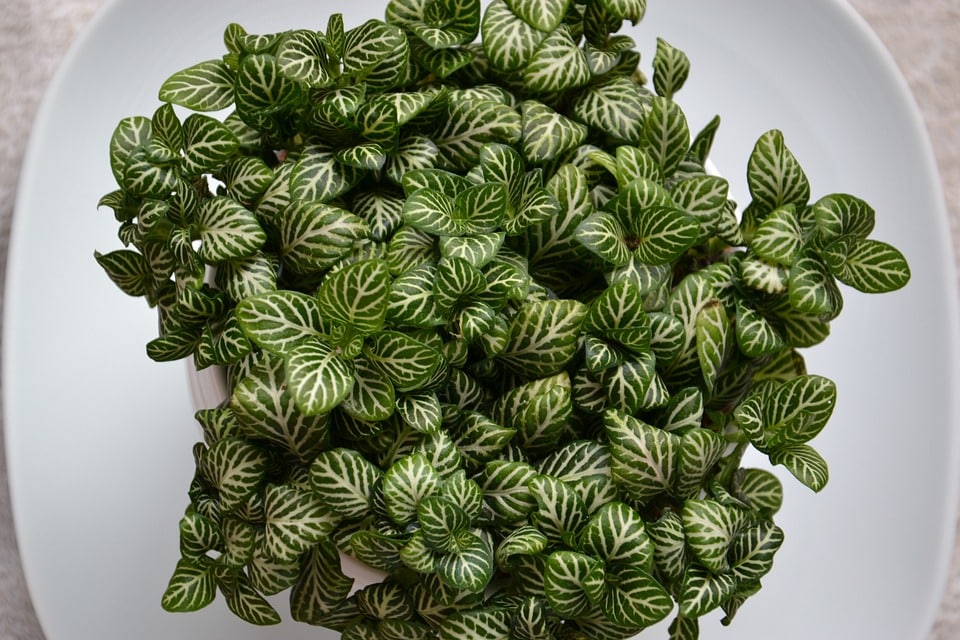
Reproduction
The plant can be propagated in two ways: by division and by taking cuttings. February and March are the most favorable for breeding. The cuttings are taken so that there are at least 3-4 rows of leaves on it, with the fact that the lower leaves are removed and immersed in a container with water. It scars quickly in 2-3 weeks. It is also possible to take root by laying the cutting horizontally on the ground. Then it must be pressed with a wire so that it adheres firmly to the ground. For this purpose, an ordinary metal paper clip can be used, it just needs to be slightly separated from the ends and pressed into the soil-substrate over the twig. If there is not enough light, the leaves lose their decorative colored veins and turn green. It should be protected from drafts, drought and overwatering. It is desirable to break-pinch the branches with flowers, as well as the tops, to make it lush, bushy. In a year, it grows 8-10 cm.
Since its veins do not penetrate deep into the ground, and it crawls over the edge of the pot, it should be transplanted and planted in shallower pots.
Diseases
This plant rarely gets sick if all the conditions necessary for its good development are met. Leaf drying along the edges is a sign that we made a mistake in growing. If the soil is not permeable enough, signs of rotting will appear on the stems and leaves. Sometimes the plant can be attacked by aphids and whiteflies. Too much moisture can favor the appearance of whiteflies.
Good to know
If the soil in the Fittonia pot dries out just once, the phytonia leaves immediately wither and dry.
If there is too much water, the leaves start to lose color and fall, and the roots start to rot. It is necessary to constantly maintain a moderate humidity of the substrate.
Drafts and cold weather cause the leaves to change color and fall. At high temperatures, it is necessary to place it in the shade and spray the leaves often to increase air humidity.
Young shoots and leaves can sometimes be attacked by aphids.

